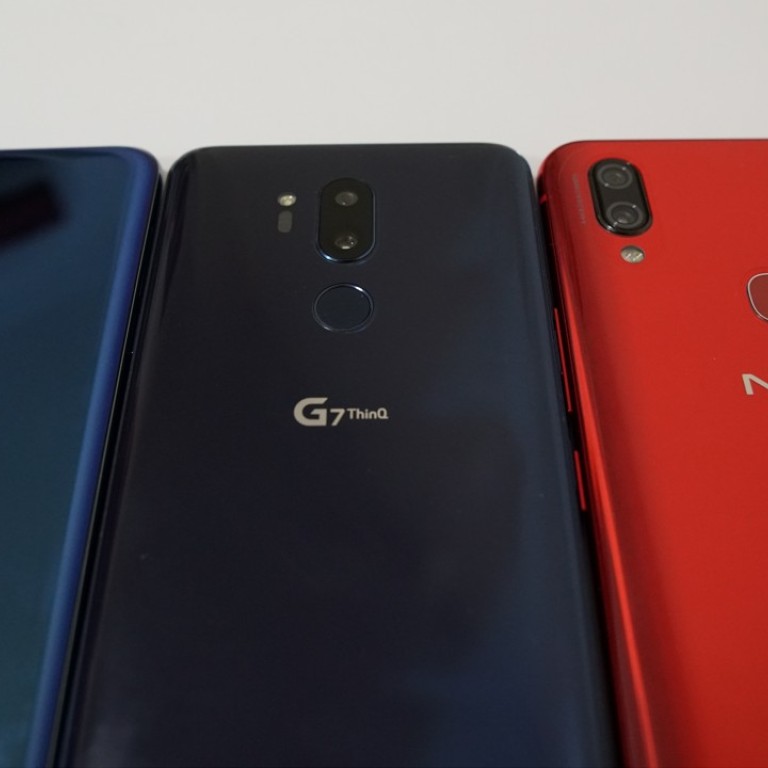
Best smartphone AI for photos, assistants and performance: Huawei P20 Pro, LG G7 ThinQ and Vivo Nex do battle
With artificial intelligence the hottest new feature on smartphones right now, we pit three popular high-end phones against each other to see which really is the most intelligent
Every year or two there’s a new hot smartphone feature. A few years ago it was unibody metal design; then OLED display panels came along, then a bezel-less form factor. In 2018, and likely continuing into next year, the “it” feature will be artificial intelligence (AI).
In January, analyst firm Gartner predicted that up to 80 per cent of all smartphones released by 2022 will have on-device AI capabilities. Companies such as Huawei and LG have already made the jump, while Vivo’s recently released Nex introduces its own AI-boosted, Siri-like digital assistant named Jovi.
LG G7 first look: brighter, louder than iPhone X with notch you can hide
We take three AI phones on the market now – the Huawei P20 Pro, LG G7 ThinQ and Vivo Nex – and pit them against each other to see which is truly the smartest in five different areas.
Scene recognition and post-image processing
All three phones have cameras that can identify scenes and objects, which means they can tell the difference between a dog and a cat, a plant a human, and whether it’s a sunny day or late night. All three are keen to show this off by displaying an icon in the camera viewfinder signifying the object or scene.
The point, phone makers will tell you, is so the handsets can snap better photos because they can adjust the camera settings or post-image processing accordingly.
I took a variety of shots of objects and scenes with all three phones to see if the cameras can indeed recognise what they are shooting, and if that had any effect on the photos.
After just a few shots it became clear that Huawei’s NPU (neural processing unit, a souped-up CPU specifically designed to handle AI tasks) is the real deal.
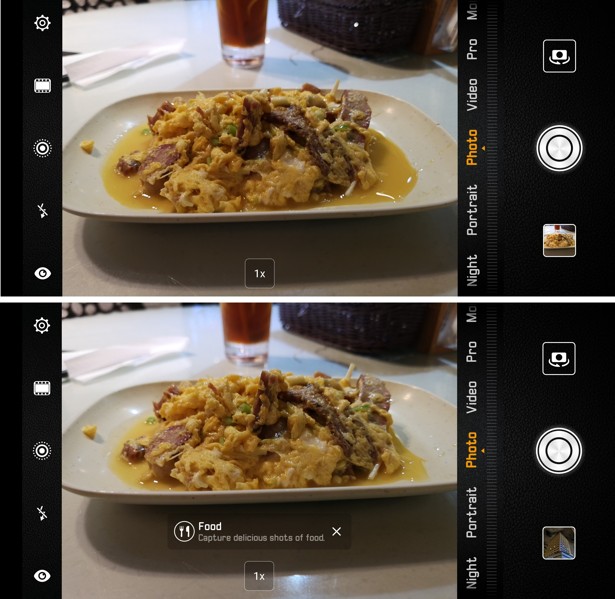
The P20 Pro identified objects significantly faster than both the G7 and the Nex (which run AI on a traditional mobile CPU). When panning across a bed of plants, for example, the P20 Pro bounced between identifying “flower” and “leaves” instantly depending on what the phone’s viewfinder was pointing at. The G7 was unable to keep up, not realising it was looking at plants (which it identifies as “greenery”) until after I’d finished panning across. The Vivo Nex, meanwhile, was completely unable to identify the bed of flowers.
The P20 Pro’s ability to recognise plants, however, was not an entirely a good thing, as Huawei’s over-aggressive AI tweaks turned the scene a bit too green. The G7 did the same thing, but at a more reasonable rate. The Nex, since it wasn’t able to identify that it was looking at plants, just captured the image as is.
Moving to the food shot, all three phones were able to identify my scrambled eggs with barbecue pork on rice as food. The Nex and the P20 Pro slapped on a heavy filter to pump up contrast, while the G7 made a more minor tweak.
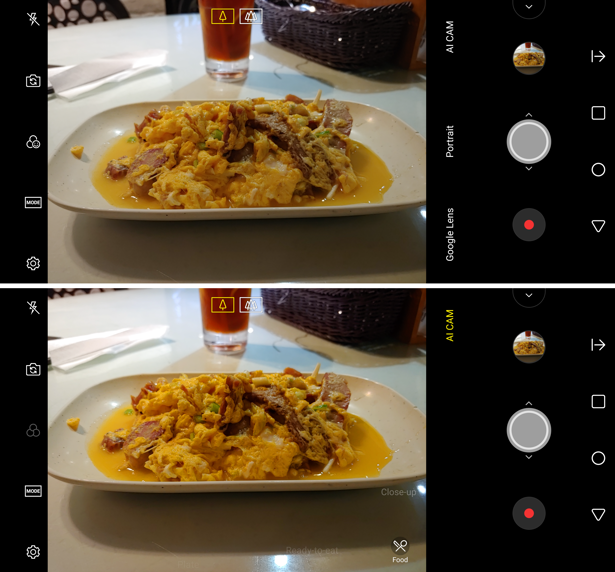
It is interesting how each phone handles the photo taking. The Huawei will proactively and aggressively alter the image for you, while the LG merely suggests changes in the form of a small pop-up button. The Vivo, meanwhile, takes the middle road – it will make the changes for you, but they are so mild most people probably wouldn’t be able to tell the difference.
Low light photography
Both the P20 Pro and the G7 use a process called “pixel binning” – which combines the colour information from four adjacent pixels into one to collect more light information – to generate light in dark shooting conditions. Both cameras do this well.
The Nex, meanwhile, merely dials up the ISO when it detects low light spots, which isn’t as effective and leaves it easily the weakest of the three in low light situations.
Xperia XZ2 Premium, first Sony dual-camera phone, a match for best
Selfie beautification
Manual selfie beautification – a digital makeover of sorts – has been around on South Korean and Chinese phones for years, but all three handsets now do it automatically.
The P20 Pro’s beautification mode goes overboard, smoothing my blemishes and wrinkles to a point where I look Photoshopped and plasticky. However, the phone did eliminate most of my acne scars, which will appeal to some.
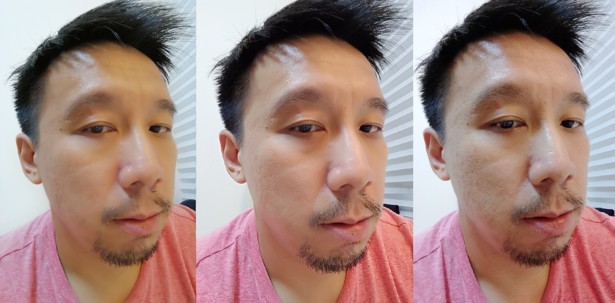
The Nex can identify its user’s gender and face shape – again shown on-screen via a symbol – and apply filters accordingly. It didn’t, however, make many noticeable changes other than remove my dark eye circles.
The G7’s beauty mode finds the happy medium. It eliminates some blemishes and imperfections, without making the resulting photo look fake.
Dedicated digital assistant buttons
Like Samsung’s recent Galaxy phones, the G7 and Nex each have an extra physical button that launches a digital assistant. While the G7 launches the widely used Google Assistant, the Nex launches Jovi, Vivo’s own (as of now) Mandarin-only virtual helper.
Jovi works similarly to Google Assistant: it can be called upon with a custom phrase and can answer basic queries. It also has a Google Lens-like feature that scans an object and searches online for related objects. As expected, however, Google’s AI is much smarter than Jovi right now. The G7’s Google Lens correctly identified that it was looking at iced tea and Gorgonzola crackers, while Jovi thought it was looking at coffee and cereal.
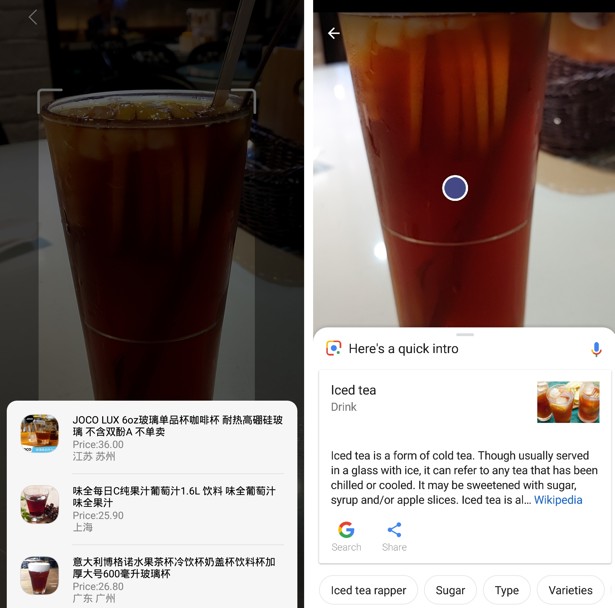
The P20 Pro, without a dedicated AI-assistant button, had to sit this one out.
Performance management
A more subtle, and arguably more important, use of AI is to optimise phones for peak performance. While this area is hard to quantify, I think Huawei’s P20 Pro is best suited for this task because of its NPU, which is more powerful than the CPU on the other two phones. Whether it’s the RAM management of background app processes or better direction of its battery power, the P20 Pro seems snappier and more responsive than the other two devices, despite having a slightly older processor.
Conclusion
Today, AI on phones is more a part-time helper than a full-on sentient machine. While Vivo and LG’s phones have useful features, Huawei’s NPU is a little ahead of the pack right now. The P20 Pro’s AI proactively affects the user experience (in good and, admittedly, bad ways) while the G7 and the Nex are more reactive.
Best phone camera for lowlight shots: Samsung Galaxy S9+ review
Prices: Huawei P20 Pro HK$6,780; LG G7 ThinQ HK$5,998; Vivo Nex HK$6,900.

